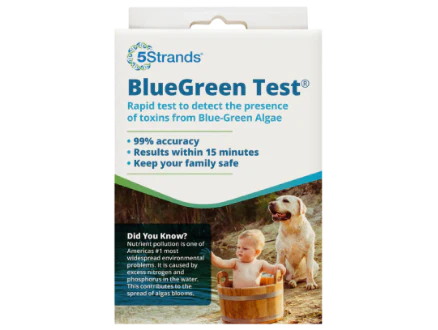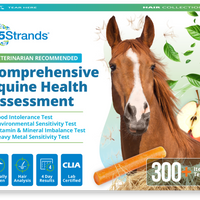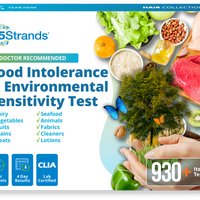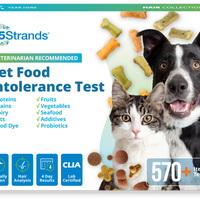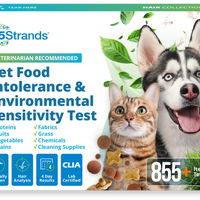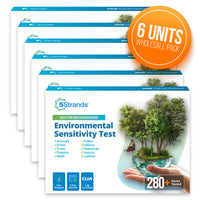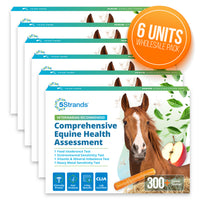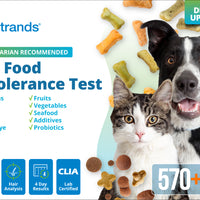Food can be delicious and fun to eat, but suppose you or someone in your family commonly experiences unpleasant symptoms like intestinal gas, bloating, abdominal pain, headache, or nausea after eating a meal. In that case, you may be right in thinking that certain foods may not be a good match. Food intolerance disorders are reported in 15 to 20% of the population, who have difficulty digesting or metabolizing a type of food. If this is your case, consider an at-home food sensitivity test, an alternative and convenient option that can help identify which foods you are sensitive to. Erica K. Ridley, M.D., an allergist at Henry Ford Health, says, “If you suspect a particular food is triggering your symptoms, these at-home tests may give you guidance on what to eliminate.”
What are food sensitivity tests?
Food sensitivity tests, also known as food intolerance, are analyses that help identify your body’s immune response to certain foods. These tests typically measure IgG antibodies in the blood. At-home tests that measure IgG4 are used to assess food sensitivities or inflammatory reactions of the immune system. While food sensitivity symptoms can vary from person to person, the problem occurs when the Immune system molecules react to certain foods you eat, triggering digestive problems, gastrointestinal upset, and gut inflammation.
Food sensitivity methods can be used, alongside other approaches and treatments suggested by a dietitian or medical doctor, to aid in making changes to your diet and decrease any gastrointestinal symptoms. Food sensitivities that are commonly tested include lactose, gluten, dairy products, histamines (chemicals found in cheese, wine, and chocolate), meats, fruits, and veggies. It is important to note that testing for food allergies is not the same as testing for a food sensitivity, since food allergy kits measure IgE antibodies.
How do they work?
At-home food sensitivity tests can be purchased online or over the counter at pharmacy stores. There are various types of at-home food sensitivity tests using different methods. You may find some collecting your blood with a finger prick, while others may collect a hair strand or saliva to test for food sensitivity antibodies. Experiencing food-related gastrointestinal issues and thinking about purchasing an at-home food sensitivity test at 5Strands? Here’s how they work:
- Step 1: Register the kit online: After creating your account online with your unique testing kit ID number, which will connect your customer portal to your test results, you’ll need to register your kit.
- Step 2: Collect hair samples: 5Strands requires that you send at least 10-15 hair strands at least 1 inch in length (20-25 hair strands if shorter).
- Step 3: Send hair sample back to 5Strands: Place your hair sample in the provided parchment paper and then in the anti-static bag with your unique testing kit ID number, and mail it.
- Step 4: Get your results: Receive testing results via the customer portal within 5-7 business days of your sample’s arrival.
How do I pick the right at-home food sensitivity test?
Before deciding on which at-home sensitivity test is best for you, it is important to determine why you’re wanting to test and the results you want to achieve. Find out whether the company tests for the foods you suspect you have an intolerance to and whether the foods you regularly eat are included in the test. You may also want to consider how the company tests for sensitivities and whether they provide support in interpreting your test results and the steps to take afterwards. With this in mind, here are three steps you should follow to pick a test that’s right for you.
- Step 1: Look for reputable food sensitivity tests produced by scientific and reputable companies that are analyzed by qualified healthcare professionals.
- Step 2: Make sure the test is safe and their results are accurate. This means choosing a testing company that uses well-established methods like IgG testing.
- Step 3: Consider the extent of your food testing: Determine whether you want a basic or comprehensive test. There are companies that screen for a wide range of food (anywhere between 100-200), including high-allergen foods such as seafoods, eggs, and nuts.
List of 7 Best Food Sensitivity Tests
Test 1: Most Comprehensive (Comprehensive Health and Wellness Assessment) 5Strands
The 5Strands’ Comprehensive Sensitivity & Imbalance Test is an all-in-one assessment that helps you understand the way food intolerances, environmental sensitivities, nutritional imbalances, and heavy metal sensitivities impact your body. With a simple hair sample, the company analyzes your body's energetic responses to over 985 items. 5Strands screens for the following items:
- Food Intolerances (proteins, grains, dairy, fruits, vegetables, fats, sweeteners, and food additives)
- Environmental Sensitivities (pollen, grasses, animal dander, mold, fabric, cleaning solutions, and other common environmental triggers)
- Nutritional Imbalances: Assesses key vitamins (A, B, C, D, E, K), minerals, fatty acids, amino acids, and other nutrients.
- Metal and Mineral Sensitivities: Looks for specific reaction to heavy metals (lead, mercury, cadmium, and other minerals to emphasize detoxification problems.
- 5Strands’ Comprehensive Sensitivity & Imbalance Test results are usually ready within 5 days.
Test 2: Best for IBS, SIBO, and FODMAPS Sensitivities: FoodMarble
FoodMarble provides an at-home breath test that customers use to track fermentation levels in the gut. Gut fermentation is a natural process, but high levels of it may indicate that food is not breaking down properly. After your gut bacteria ferment food, some levels of hydrogen are released into the bloodstream, eventually reaching the lungs. Because of changes in levels of breath hydrogen, FoodMarble’s breath test is useful for assessing small intestinal bacterial overgrowth (SIBO), lactose intolerance, carbohydrate malabsorption, IBS, and FODMAP sensitivities. Other details of their testing process include:
- FoodMarble AIRE 2: This test measures hydrogen and methane
- FoodMarble Food Intolerance: This tests for FODMAPS (Lactose, fructose, sorbitol, and insulin).
- Their comprehensive report results can take up to 6 weeks.
Test 3 Title: Best value: myLab Box
MyLab Box’s sensitivity test assesses 96 food items to help determine which ones may be causing your health symptoms like fatigue, headaches, bloating, and other gastrointestinal problems. With a finger prick, myLab Box collects a few drops of blood to find elevated food and antigen-specific IgA, IgG, and IgG4 antibodies responsible for causing food sensitivities. Other details include:
- Immunoglobulin IgA, Immunoglobulin IgG, and Immunoglobulin IgG4
- Test results: 2-5 days, but some may wait a longer time
- Price: $169.00 per kit
Test 4: Best Basic Test (Basic Food Sensitivity Test): Everlywell
Everlywell’s basic food sensitivity test measures your immune system’s IgG antibody reactivity to over 90 food items, screening for eggs, five dairy-based foods, five legumes, seven nuts and seeds, ten-grain-based foods, eleven fruits, eleven seafood, fifteen spices, and twenty vegetables. Since this is a basic sensitivity test, it does not test for allergy, nor can it tell you whether you are lactose intolerant or have celiac disease. Other test details include:
- Basic IgG antibody test (This measures your body’s immune response to 96 commonly known foods, rating them on a scale of class 0 to 3 (normal reactivity to high reactivity).
- Testing method: Blood sample
- Test results: After 5 days
- Price $199.00
Test 5: Best for Food and Environmental Allergy: yorktest
Yorktest’s food and environmental allergy test screens for actual IgE-mediated food allergy, helping their customers learn whether they are dealing with an allergy (IgE-mediated) instead of a food sensitivity. The test specifically targets 23 core foods known to elicit an allergic reaction, as well as 19 environmental allergens. Their food sensitivity testing approach is practical and very reasonable, and from customer reviews, many have resolved many of their health issues. Other test details include:
-
Test for IgE reactions to 23 foods, and 19 environmental allergens
-
Testing method: Blood sample
-
Test resuts: 7-10 days
Test 6 Title: Best for DNA test for Personalized Health and Nutrition: GeneFood
GeneFood offers customers another option. This test helps identify food intolerance related to generic wheat sensitivity. Their DNA test for personalized health and nutrition looks at more than 150 genetic markers associated with nutrition, including non-celiac gluten sensitivity (wheat intolerance) and the HLA-DQA1 genes linked to histamine intolerance and lactose intolerance, and celiac disease. GeneFood’s histamine scoring model assesses genetic markers such as the AOC1 gene, known for creating diamine oxidase, an important enzyme that removes histamine from the gastrointestinal tract. Other test details include:
- DNA Test for Personalized Health and Nutrition (Testing for core food intolerance and histamine pathways).
- Testing method: Cheek Swab
- Turnaround time: 2-3 weeks
Test 7: Best for a Healthy Gut: Ombre
Ombre’s Gut Health Test screens for your gut microbiome’s balance and imbalances by testing a stool sample. With this specific type of test, they aim to help customers understand their gut intolerances and determine what foods might be responsible for causing uncomfortable symptoms. To provide evidence-based observations into the types of foods and probiotic strains that might be responsible for irregularity and other health concerns, Ombre’s gut wellness test uses 16s rRNA V3-V4 regions to screen for over 10,000 bacterial species, showing in a report which ones from your sample are meaningful. Other testing details include:
-
A personalized microbiome report
-
Food recommendations
-
Targeted probiotic suggestion
-
The test report is ready in about 2-4 weeks
On a final note
Whether you struggle with gastrointestinal problems, fatigue, brain fog, headaches, or skin issues, taking an in-depth approach to managing your food sensitivity problems is a worthy investment in your health and long-term well-being. The insights that you can get from test results can guide you in making personalized dietary changes that will help improve your symptoms. Because of their ability to help determine specific food components that your body may be reacting to, a food sensitivity test can be a valuable tool in improving not just your physical health, but also your quality of living.



